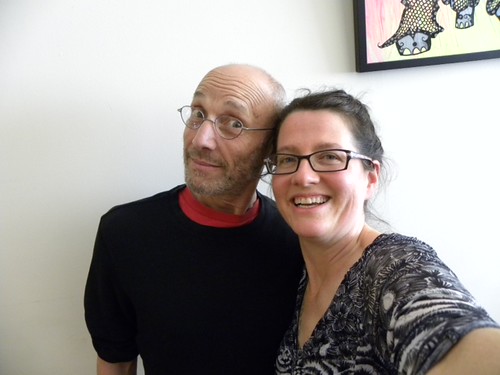Storytelling is an act of communication–as writers, we are driven to create narratives because we have something to say.
That doesn’t mean every story has to come out swinging, like the fables you may have studied in grade school. Most good works of fiction don’t beat their readers over the head with some heavy-handed moral, or a preachy political message.
The theme of a story can be a subtle observation about human nature, a ‘here’s what it feels like to discover your own mortality,’ or ‘here’s something I’ve noticed about losing a loved one, falling in or out of love’, etc. It can be romantic or deadly serious, a low-key observation or a big insight into life’s greater mysteries. It can address a specific historical event, as does Richard Bowes’s 9/11 ghost story, “There’s a Hole in the City,” or a more generalized experience: war, car accidents, divorce.
Often when we are writing draft, we don’t know what our themes are. It’s entirely common for a writers to not necessarily know what they’re saying within a given story until that draft is written. . . and that’s absolutely fine. Our initial spark for a given book is quite often something very concrete: a character, a setting, or a situation. While that initial inspiration may be tied to whatever deeper things a writer wishes to say, it is normal to find those ideas don’t really surface until the text is actually on the page.
Why worry about theme at all if your subconscious mind is on the job? Because after you’ve got that draft in your hands, it’s worthwhile to figure out what you’re saying, how you’ve said it and whether you’ve made your argument successfully. The reason is this: fiction can be more sophisticated and pleasing when it has a unity that comes from the author’s having paid attention to all of its elements.
Articulating Themes
When I ask students to identify the theme of a given piece, I like to see a simple sentence. Rather than “Justice” for example, I like to at least see “This story is about Justice” or, preferably, “At times, our justice system is unjust.”
With this in mind, take a moment to see if you can express the themes of a few of your favorite motion pictures, television shows, and books. Don’t be concerned if they seem simple. It is entirely possible to do a complex and nuanced exploration of what seems like a simple proposition, even a cliche. Readers have their own experiences to bring to bear on universal propositions, such as: “Having a sick parent is hard;” “Raising a child is rewarding;” or “Cheaters sometimes do prosper.”
Making the reader ‘get it’
When writing students are asked to consider theme, a risk arises that they will become focused on this element to the exclusion of all else, overcomplicating their ‘message’ and then feeling frustration if their instructor and classmates don’t understand or agree with what they are saying. At times like this, writers may ask: how can I make readers get my theme?
The answer, frustratingly enough, is that they don’t have to. However, your peers, instructors and workshop partners should be at least able to see what you are saying, though–if they can’t, it probably means this element of your story is murky.
Other questions to ask when considering your story’s thematic content:
Do you know what your story is about?
How important is that theme to you?
Does it address that topic?
Are you satisfied with what the story says?
Imagery as it relates to theme:
Moving on, what is imagery and how does it relate to this idea of theme?
You probably remember the basics from English classes you have taken throughout your educational career. Imagery, in literary terms, is language which evokes sensory experience. It includes similes, metaphors, and allusions.
Imagery is what makes your prose poetic; it is what elevates your novel from being a transcript of plot and character action and into another realm of artistic achievement. But to what end? Perhaps, you think, it’s hard enough to tell an interesting story clearly without gumming up the works with a lot of arty language. And it may be that you are a spare prose stylist, with a light hand with such flourishes. Everyone approaches imagery differently: some of us flavor sparse powerful images and plainer prose; other writers layer on the metaphors heavily, even to excess (see purple prose).
All that said, the power of your fiction can increase exponentially if the images you choose resonate somehow with your theme.
Think of your novel as a musical instrument, specifically a piano. Imagine that each of its 88 strings is an element of your novel; a character, a plot development, a pivotal revelation, a theme. As you strike the various notes, music plays–a concert unfolds, carrying the reader along with it.
Now, imagine that the piano is out of tune.
A well-tuned work of fiction is merely one whose elements are in harmony with each other. If your story is about greed, which image is more appropriate to it: apple blossoms floating on a river, or crows fighting over scraps of garbage? If it about reawakening to joy after a long period of sadness, is it better to conclude it with a sunrise or a sunset?
With that in mind, look at the following lists. One is a series of themes, and the second is a random list of images.
First, see which list items feel like they might match.
Next, think about what kinds of stories you expect to see paired with the images, and what kind of images you expect to see in stories with the stated themes.
Finally, consider whether there are images not on the list that you prefer as possible partners for a given theme, or whether there are themes outside this very small roster that might go nicely with the images below.
Make a few notes, do a little thinking… and then have a look at this week’s novel submissions, and see if it sparks any insights.
List one – Themes… a few things a novel might be about
The cost of war
The extent of human obsession
Learning to forgive
The difference between right and fair
The cruelty of kids to one another
Faithfulness in marriage
The difficulty in being in competition with friends.
What is the nature of heroism?
Death of dreams
Failure versus the price of success
Learning to face tragedy
Miracle of new life
The joys of parenthood
Overcoming addiction
Sexual awakening
List Two – Randomly Chosen Images
Fields of anonymous dead soldiers
Brown leaves and patches of snow
Mirrors
Birdsong
Breaking new eggs
Rainbows
Heavy curtains
Blowing dirt and tumbleweeds
Spawning salmon
Indecisive unhappy-looking shoppers
Empty swimming pools
Newborn animals
Horses
Houses with broken windows
Fresh paint
Well-oiled guns in a pristine cabinet.




